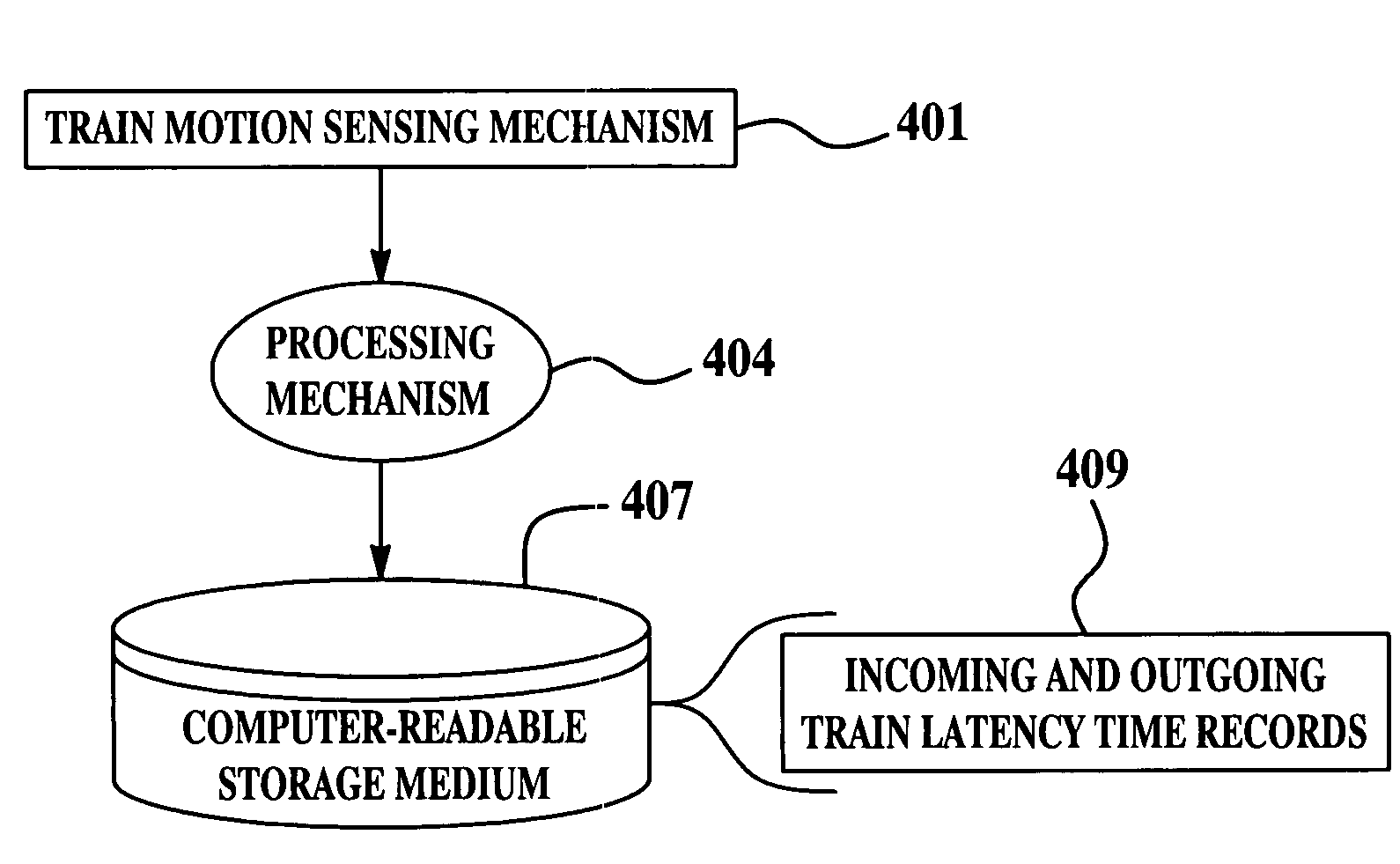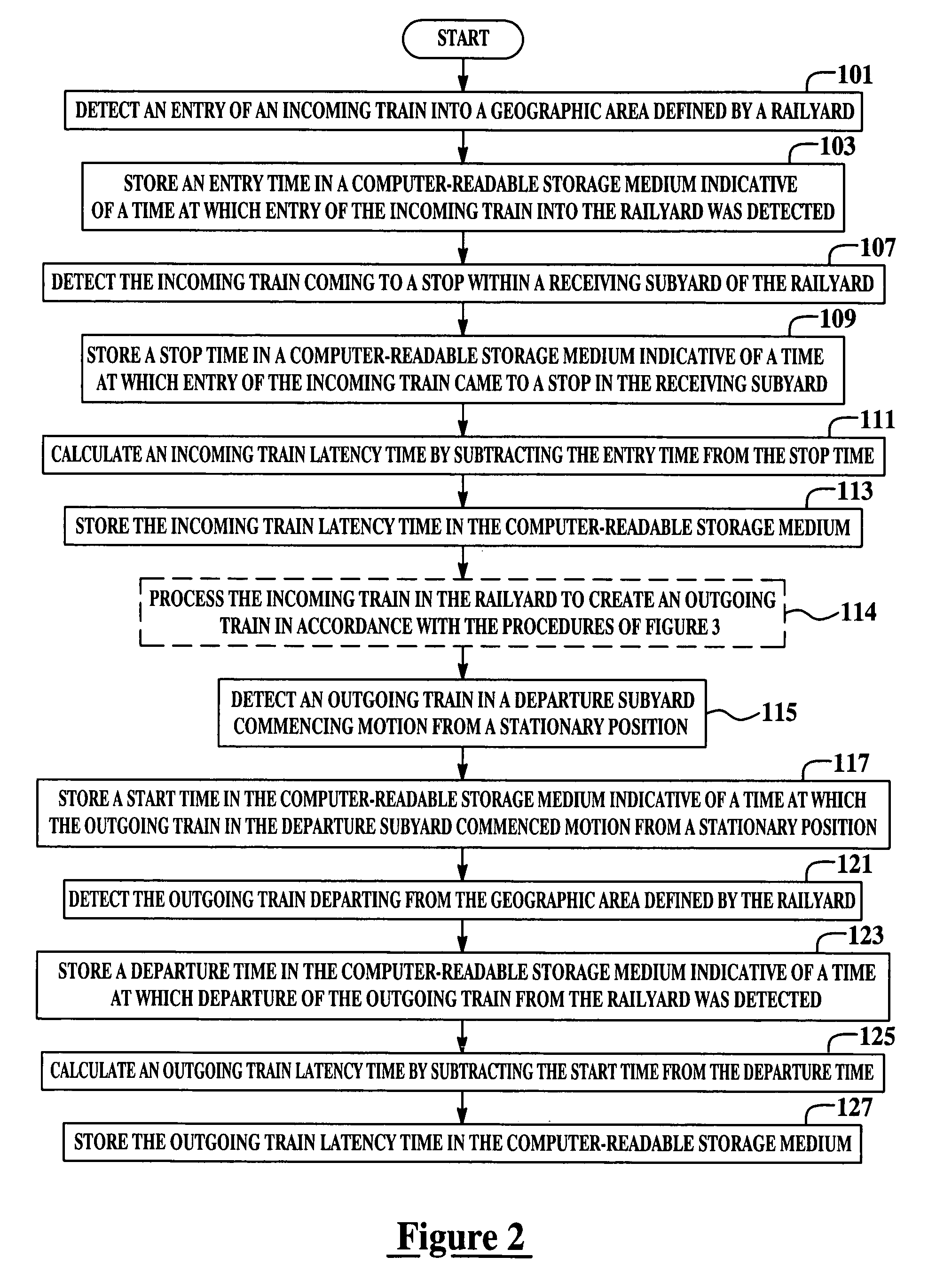System and method for monitoring train arrival and departure latencies
a technology for arrival and departure latencies and systems, applied in the field of railyards, can solve problems such as inaccurate picture of railyard operations, high cost and complexity and complex installation of aei tag reading systems
- Summary
- Abstract
- Description
- Claims
- Application Information
AI Technical Summary
Benefits of technology
Problems solved by technology
Method used
Image
Examples
Embodiment Construction
[0017]FIG. 1 is a diagram of a railyard 10 for illustrating the various areas of the railyard that trains pass through during railyard processing. Railyard 10 includes various sets of tracks dedicated to specific uses and functions. For example, an incoming train arrives in a receiving subyard 50 and is assigned a specific receiving track. At some later time, a switch engine enters the receiving track and moves the railcars into a classification subyard 54. Classification subyard 54 is sometimes referred to as a “bowl”. The tracks in classification subyard 54 are assigned to hold specific blocks of railcars being assembled for outbound trains. When assembly of a block of railcars is completed, this block of railcars is assigned to a specific track in a departure subyard 58 reserved for assembling a specific outgoing train.
[0018]When all blocks of railcars required for an outgoing train are assembled, one or more locomotives from a locomotive storage and receiving overflow subyard 62...
PUM
 Login to View More
Login to View More Abstract
Description
Claims
Application Information
 Login to View More
Login to View More - R&D
- Intellectual Property
- Life Sciences
- Materials
- Tech Scout
- Unparalleled Data Quality
- Higher Quality Content
- 60% Fewer Hallucinations
Browse by: Latest US Patents, China's latest patents, Technical Efficacy Thesaurus, Application Domain, Technology Topic, Popular Technical Reports.
© 2025 PatSnap. All rights reserved.Legal|Privacy policy|Modern Slavery Act Transparency Statement|Sitemap|About US| Contact US: help@patsnap.com



